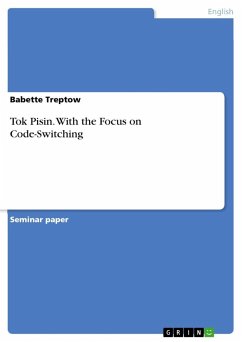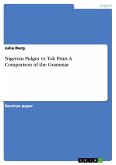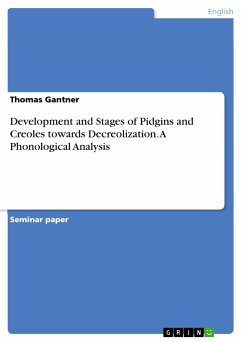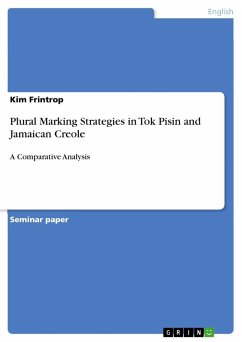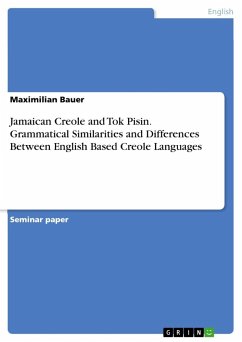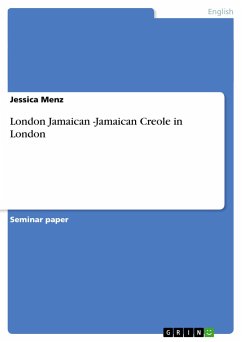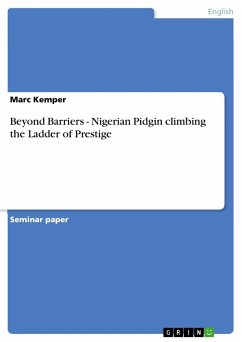Seminar paper from the year 2010 in the subject English Language and Literature Studies - Linguistics, grade: 1,3, Humboldt-University of Berlin, language: English, abstract: Pidgin and creole languages, once described as "broken English", "bastardized jargons" or "marginal languages", became objects of serious research for many professional linguists from all over the world. They have generally been accepted as new and independent languages rather than corrupted versions of other, so-called higher, languages (cf. Holm 2000:1). Pidgins and creoles became central to linguistic studies on first and second language acquisition, language linguistic universals, language change and language contact (cf. Todd 2001: 524). McMahon (1994: 253) points out that there are "[a]pproximately 200 pidgin and creole languages spoken today, mostly in West Africa, the Carribean and the South Pacific." Tok Pisin, a national language of Papua New Guinea, which is located in the southwest of the PacificOcean, can be considered a pidgin/creole language1. In many respects, it shares the linguistic and socio-historical features of other pidgins and creoles spoken around the world. However, Tok Pisin is unusual with regard to its linguistic development, which did not take as much time as in the case of most other pidgin and creole languages. Moreover, linguists are eagerly interested in studying this contact language because its historical development is precisely and accurately documented (cf. Mühlhäusler 1990: 177-181). The pidgin language Tok Pisin has been introduced in the course of this semester´s seminar Contact Situations: English-Related Pidgins and Creoles. I was part of the presentation group on Tok Pisin. Already then, my interest was raised. Thus, I was concerned with literature and information about the pidgin language before I began to write this term paper. This term paper raises the question whether and to what extent Tok Pisin gains influence in Papua New Guineaover the course of time? In this context, various evidence for the assumption will be displayed and above this, several reasons for the spreading of the language will be depicted. For this purpose, I will make use of a variety of scholarly literature, whereby I will especially focus on well-known linguists, such as Mühlhäusler, Holm or Kulick et al..
Hinweis: Dieser Artikel kann nur an eine deutsche Lieferadresse ausgeliefert werden.
Hinweis: Dieser Artikel kann nur an eine deutsche Lieferadresse ausgeliefert werden.

